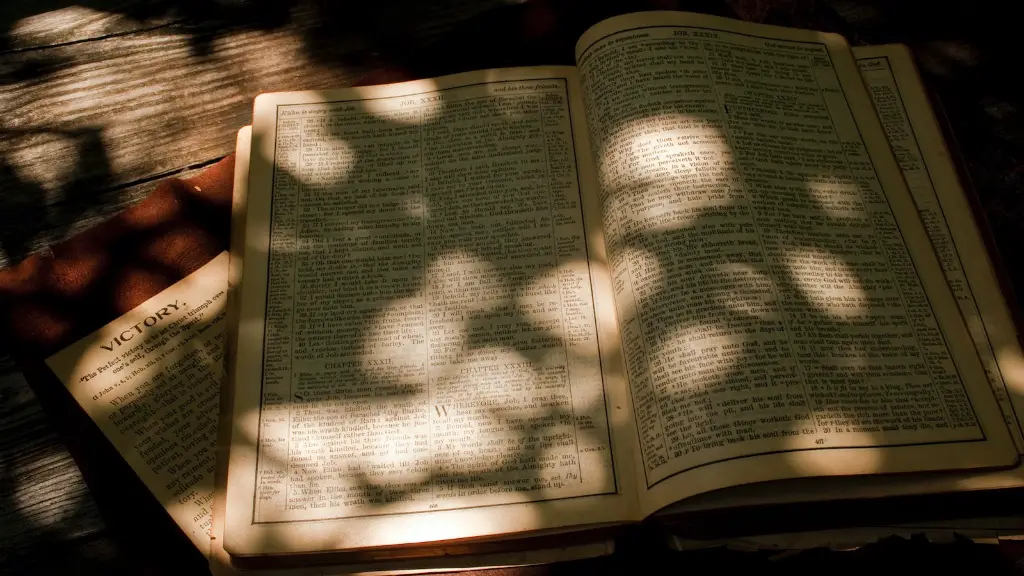Who Are Adam and Eve?
Adam and Eve are the first humans in the Bible and the ancestors of all modern humans. They feature prominently throughout the Bible and in many of its stories. In the book of Genesis, which is the first book of the Bible, they are described as having been created by God, who gave them the power of free will.
In the Bible, Adam and Eve’s story begins in the Garden of Eden. Here, Adam and Eve are presented with the Tree of Knowledge of Good and Evil, wherein they are instructed by God not to eat the fruit of the tree. Despite being warned, Adam and Eve disobey the instruction and eat the fruit, thus causing their expulsion from the Garden of Eden and their curse of sin and mortality.
Throughout the Bible, Adam and Eve are presented as archetypes of good and evil and morality, who set the stage for the human condition, with their choices and consequences.
What Is the Significance of Adam and Eve in the Bible?
Adam and Eve’s importance in the Bible is multi-faceted. Firstly, their story is a reflection on the human condition, particularly their fall from innocence and the consequences of their sin. It serves as a warning regarding the limited power of humankind and the importance of adhering to the Divine will.
Secondly, Adam and Eve are symbolic of the covenant between God and His creation. They provide a starting point for the people of God, acting as the first representatives of the faith and its ideals. Lastly, Adam and Eve are often symbolic of divine love, as they provide a representation of the perfect spiritual relationship between God and humankind.
Where In The Bible Is Adam and Eve’s Story Found?
Adam and Eve’s story is most prominently featured in the book of Genesis, which is the first book of the Bible. The book of Genesis offers the most comprehensive and detailed description of the creation of mankind and their story of disobedience.
However, their story is also featured throughout the Bible, notably in other books such as the Psalms, Exodus, Ecclesiastes, Job, Proverbs and Deuteronomy, amongst others. It is also briefly referenced in some books outside of the canon of Scripture, such as Wisdom of Solomon, The Assumption of Moses and 1 Enoch.
What Other Characters Are Important To Adam and Eve’s Story?
There are several other characters who play an important role in the story of Adam and Eve. Firstly, God is the primary protagonist, who creates the first humans and provides them with free will, setting the stage for the events to follow.
Additionally, the Serpent makes an important appearance in the story, as the one who tempts them to eat the fruit of the Tree of Knowledge of Good and Evil. The Serpent represents false wisdom and disobedience to God, making him a key figure in the story.
Lastly, the cherubim, who are winged angelic beings, serve as guardians of the Garden of Eden and charge of Adam and Eve in the Garden.
What Are the Consequences of Adam and Eve’s Sin?
The consequences of Adam and Eve’s sin of disobedience are far-reaching. Firstly, their disobedience causes them to be expelled from the Garden of Eden, meaning that they are denied access to the Tree of Life and their perfect life.
Secondly, they are cursed with the wages of sin and mortality, thus robbing them of their perfect condition of immortality. Additionally, their sin causes separation between God and humankind, with original sin being the root cause of all of mankind’s suffering.
Lastly, their sin is indicative of the human condition and our limited free will, symbolic of the perils of disobedience and the need to adhere to the will of God.
Adam and Eve in Other Religions and Sects
Adam and Eve have a presence in many religious and spiritual traditions, although interpretations of the significance of their story may differ. In Judaism, Adam and Eve are respected, although the notion of original sin is viewed with more nuance and scepticism.
In Islam, Adam and Eve are revered figures, with the Quran describing their creation in great detail. Similarly, in Christianity, Adam and Eve are venerated figures, with the story of their disobedience serving as a key emblem of the teachings of Jesus Christ.
However, there are some sects of Christianity, such as Jehovah’s Witnesses, who reject the notion of original sin, instead viewing Adam and Eve’s disobedience as having only a symbolic importance, rather than being instrumental in the human condition.
Interpretations of Adam and Eve’s Story
Adam and Eve’s story has been interpreted in a variety of ways since it was first introduced in the Bible. In the modern era, it is often viewed as an allegory or parable, intended to teach a lesson about morality and the concept of free will.
Some commentators view the story as a cautionary tale, warning us of the dangers of temptations and disobedience. Others view the story as symbolic of our connection to God, with their disobedience being a symbol of the fallen nature of humankind.
Ultimately, however, interpretations of the story vary greatly, and can depend upon one’s particular faith and philosophical beliefs.
The Relevance of Adam and Eve Today
The story of Adam and Eve is still relevant today, especially in its symbolic nature. It serves as a reminder of the human condition and of the consequences of our choices, whilst also providing moral and spiritual guidance.
On a spiritual level, the story of Adam and Eve can provide us with comfort, reminding us that our ultimate purpose is to serve God and follow His will. Additionally, it provides us with an example of the importance of free will, reminding us of the need to act responsibly and in accordance with our faith.
Furthermore, the story can provide us with insight into the concept of original sin, whilst also helping us to understand the nature of our relationship with God.
The Influence of Adam and Eve on Literature and Art
The story of Adam and Eve has had a large impact on literature and art. In literature, it is a story that has been reimagined multiple times, notably in the works of John Milton and the Epic of Gilgamesh.
In art, it is a common subject, with many famous works of art depicting Adam and Eve’s story, including Michelangelo’s Sistine Chapel fresco and The Garden of Eden by Jan Brueghel the Elder and Peter Paul Rubens.
Overall, the story of Adam and Eve has had a large influence on literature and art, and continues to be a source of inspiration for many works, providing an enduring source of fascination, reverence and exploration.
The Role of Adam and Eve in Popular Culture
Adam and Eve have had a significant role in popular culture. They are frequently referenced and alluded to in popular music, notably in songs such as Snow Patrol’s Open Your Eyes and Eminem’s Bad Guy.
Additionally, Adam and Eve have been subjects of a variety of television shows and films, including the popular video game series The Last of Us. In this series, the game’s central characters Joel and Ellie serve as modern day interpretations of Adam and Eve, with the story of their journey to the west paralleling the journey of the original humans in the Bible.
Lastly, they are also frequent subjects of figurative representations in popular culture, with many works of art depicting and reimagining their story.
The Controversial Views Regarding Adam and Eve
The story of Adam and Eve has caused a great deal of consternation and debate in popular, religious and academic circles. This is due to its symbolic nature, as well as its potential implications regarding the concept of original sin, free will and our relationship with God.
The most common point of contention is the notion of original sin, as some commentators have questioned the plausibility of the notion, as well as its ethical implications, particularly with regards to the idea of a just and merciful God.
Additionally, there has been debate over the story’s interpretations, with many commentators critiquing its frequent focus on the narrative of temptation and disobedience, rather than the importance of free will and godly responsibility.
Adam and Eve’s Significance In Moral Teachings
Adam and Eve’s story has served as a cornerstone in faith-based moral teachings. It serves as a reminder of our basic nature and connection to God, one that we must respect and strive to maintain.
Additionally, the story of Adam and Eve speaks to our human potential, with their disobedience and limited free will being a cautionary tale regarding our need to make responsible choices.
The consequences of their sin also serve as an important reminder of the wages of disobedience, and the importance of obeying God and following His will. Ultimately, their story provides us with an important reminder of our basic moral obligations and responsibilities in life.



